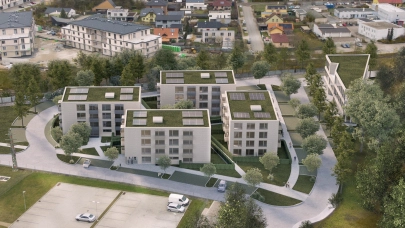
At €3.2 billion for Q1-Q3 2023, CEE investment activity is at a 10+ year low (down 59% year-on-year). The pricing gap between buyers’ and sellers' expectations remains a significant barrier to seeing volumes return to the 5 and 10-year average levels of €10-11 billion. However, real estate fundamentals in CEE remain fairly robust. Lower levels of vacancy are being recorded and some good levels of rental growth in certain sectors have been noted, reveals Colliers in its latest report.
Silviu Pop, Director of Research for CEE and Romania explains: “The CEE-6 countries have so far managed to boost their economic sentiment indicators compared to Q2 2023, except for Romania and Hungary, which experienced a negligible decline. However, the external situation remains quite negative. Even without considering the global economy's somewhat poor state, the news from the European neighbourhood is concerning, as the Eurozone's Markit PMI hit a three-year low in October 2023. This is particularly worrisome because the Eurozone is the primary export destination for goods and services produced in the CEE-6 region, making this a significant downside factor.
“Nonetheless, there is a mitigating factor present in the CEE-6 region, applicable to all six countries, albeit to varying degrees: a substantial inflow of capital, whether public or private. The region is currently experiencing a reshoring phase amid geopolitical shifts, and EU funds are pouring into these countries at historically significant levels, relative to their GDP,” continues Silviu.

Silviu Pop
Director | CEE & Romania Research
Colliers
Kevin Turpin, Regional Director of Capital Markets, CEE adds: “Construction prices in the CEE region remain elevated, but stable, and may even be falling slightly. In addition, land in some of the most sought-after locations is scarce and more expensive making development more difficult to deliver given the development-to-exit yield spread being too narrow. Labour costs are also under upward pressure. All of which may lead to higher sales and/or rental prices, or reduced pipelines, and could eventually lead to undersupply in some markets and sectors”.

Kevin Turpin
Regional Director of Capital Markets for Central and Eastern Europe
Colliers
Q3 2023 prime yields
All-in financing costs are currently in the region of 5.75%, driven by significantly higher interest rates and interest rate swaps. Compared to other markets in Western Europe, there has been less of a pricing correction recorded in CEE over the past 12 months, which could lead to a slower recovery in transactional activity throughout 2024.
CEE flows by sector
Office investment volumes have declined, both Globally and in CEE, accounting for just 29.9% of CEE volumes during Q1-Q3 2023. The I&L sector reclaimed the top spot with a 31.4% share, followed by retail with 30.6%. The largest transaction of the year so far was a €200 million acquisition (M&A) by NREP, of I&L projects and assets from 7R in Poland.
CEE flows by origin of purchaser
CEE-6 domestic capital has been the most active so far in 2023, with an impressive 56% share of total regional volumes. Czech capital secured the highest share of volumes with 33%, with 10% in just 2 retail transactions. Other CEE regional capital picked up a further 23% and were followed by European (22%), USA (7%), APAC (7%) and Middle Eastern (5%) capital.
Outlook for upcoming months
“Many potential sellers, if they are able to do so, are reassessing their strategies and business plans in order to ‘survive until ’25’, which was a phrase that could be heard often at Expo Real in Munich. This may mean using the time to stabilise income/leasing, operational efficiency and ESG compliance upgrades. Some owners however may not have the option or resources to do this and may look to test the market appetite to limited pools of investors in ‘off-market’ deals. In fact, this has already been happening with varying levels of success. On the other hand, many buyers are simply waiting for opportunities from forced or distressed sales due to declining valuations, elevated interest rates and debt rollovers for example. However, so far, no major signs of distress have materialised”, comments Kevin.
ESG-compliant buildings are slowly becoming the market norm, reflecting a broader commitment to sustainability from both developers, owners, investors, lenders and occupiers. Given the current market environment, timing in terms of related costs may well mean further implications to pricing that have not yet been factored in. However, increasing pressure is being applied to the property and financing industries in terms of their compliance with European ESG regulations.



